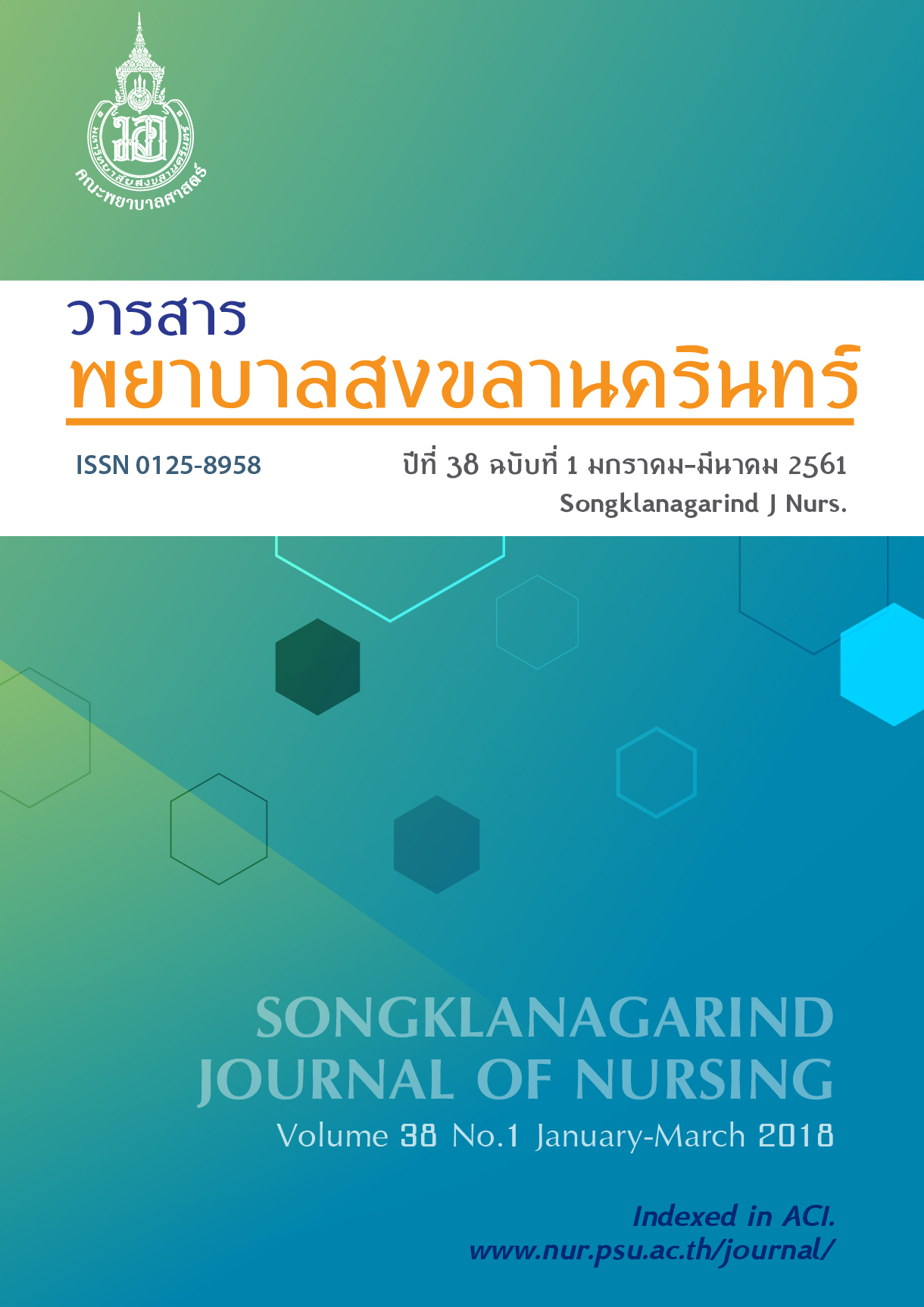Effectiveness of Learning Outcomes of Flipped Classroom and Self-Directed Learning Characteristics of Second Year Nursing Students in Adults and Elderly Nursing Course I
Main Article Content
บทคัดย่อ
Nowadays, education system was changed to the 21st century and students are generation Z groups who use technology for learning and sharing in classroom. Therefore, this classroom research which investigating effectiveness of learning outcomes of flipped classroom and self-directed learning characteristics is necessary to develop the learning and teaching management in classroom. The objective of this study was to examine the learning outcomes of flipped classroom and self-directed learning approaches in the second year nursing students who attended the Adult Nursing course.
The learning outcomes were determined by pre and post test scores, final examination score, and self-directed learning characteristics. The flipped classroom and self-directed learning approaches were applied to 148 students in the 7 hours of orthopedic topic. The self-directed learning characteristics were measured by self-report questionnaire. Data were analyzed by descriptive statistics and dependent t-test.
The results showed that the mean post-test score was significantly higher than the pre-test score (p< .001). Moreover, 90.54% of the students had the final examination scores in the orthopedics topic more than 50%. In addition, the students had the mean score of self-directed learning characteristics significantly higher after participated in this classroom activities compared to before participated (p< .01). Therefore, flipped classroom is suggested for implementing with nursing students.
Article Details
เอกสารอ้างอิง
2. Ongsangkun S. Cover story: Generation z. In: Ongsangkun S, Naeak R, editor. Read me. Bangkok: Office of knowledge management and development (Public organization); 2015. Thai
3. Aeuwittayawutthikun S. Student 21st century with virtual classroom. In: Ongsangkun S and Naeak R, editor. Read me. Bangkok: Office of knowledge management and development (Public organization); 2015. Thai.
4. Keammanee T. Science teaching: Knowledge in order to provide an effective learning process. 17th ed. Bangkok: Darnsutha Press Co; 2556. Thai.
5. Post JL, Deal B, Hermanns M. Implementation of a flipped classroom: Nursing students’ perspectives. J Nurs Educ Pract. 2015; 5(6): 25-30.
6. Towle A, Breda K. Teaching the millennial nursing student: Using a “flipping the classroom” model. Nursing and Health. 2014; 2(6): 107-14. doi: 10.1318/nh.2014.020601
7. Piyawat J. The flipped classroom in Thai classroom online system ClassStart.org. In: Kitikorn R, editor. Teacher for student: Create the flipped classroom. 2 nd ed. Bangkok: S. R. Printing massproduct; 2013. Thai.
8. Van Amburgh JA, Devlin JW, Kirwin, JL, et al. A tool for measuring active learning in the classroom. Am J Pharm Educ. 2007; 71(5): 1-8.
9. Kritpracha C, Sae-Sia W, Nukaew O, et al. The development of cooperative learning using jigsaw activities to improve learning achievement and self-directed learning behaviors among master nursing students. IJIET. 2018; In press.
10. Chareonchim S, Kuntiya T, Chareonchim, S, et al. Self-Directed Learning Ability of Pre-Service Teachers, Faculty of Education and Development Sciences Kasetsart University [Internet]. Faculty of Education and Development Sciences Kasetsart University; 2012 [cited 2016 Apr 11]. Available from: http://www.edu.kps.ku.ac.th/DBresearch/
document/DB_RESEARCH/Research30.pdf


